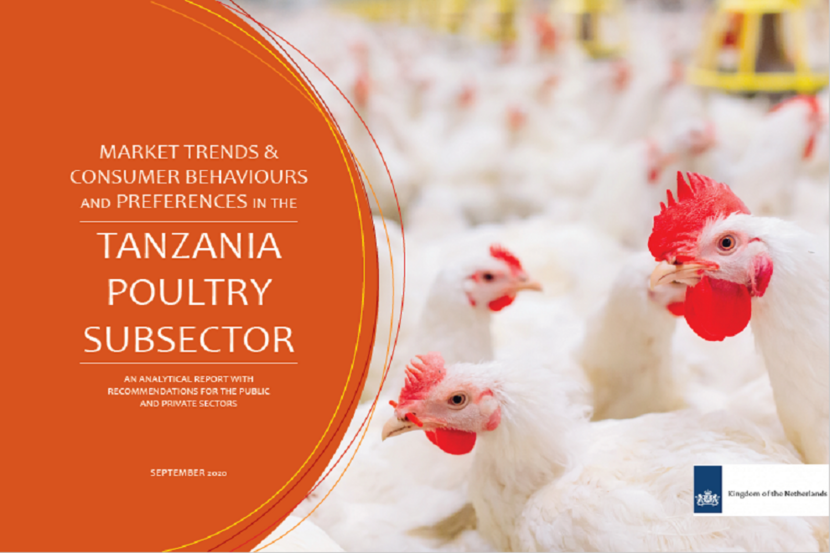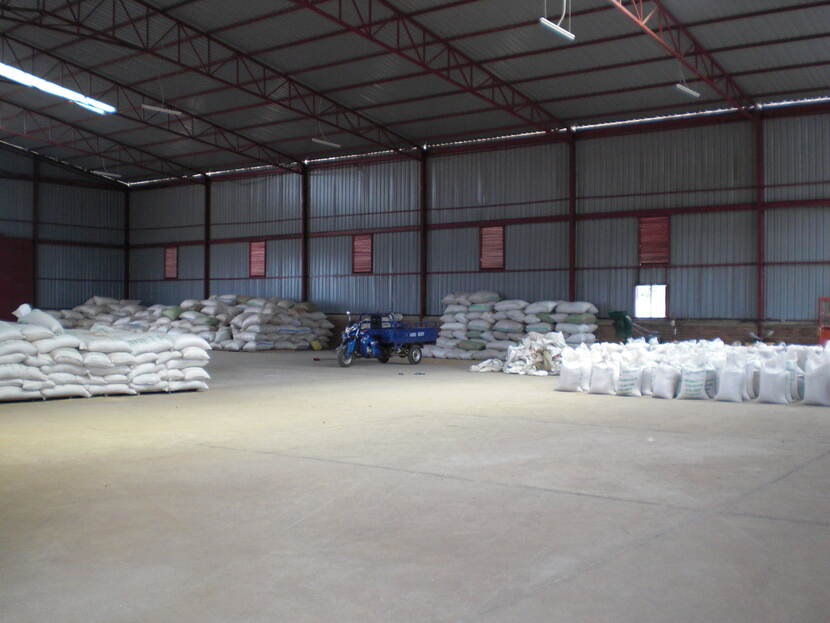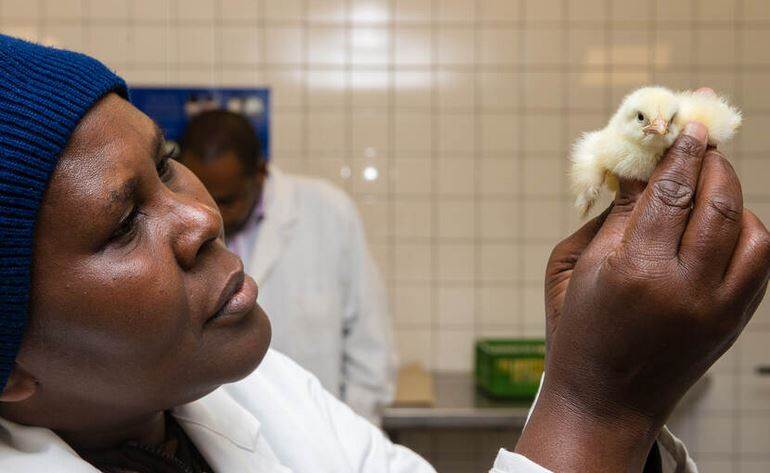A report on market trends and consumer behaviour for the poultry subsector in Tanzania
Tanzania is endowed with abundant natural resources, which includes land, forage and livestock resources base. The poultry subsector is comprised of a large proportion of indigenous chickens, dual-purpose chickens and exotic (layers and broilers) chicken. The sector has great potential for investment considering the country boasts 38.5 million local chicken, 40.6 million layers and broilers and a growing population of dual-purpose chickens. This sector value chain offers lots of investment opportunities. The Embassy of the Kingdom of the Netherlands commissioned Match Maker Associates to conduct this study to offer up-to date information about poultry and poultry products in line with consumer preferences and behaviour, market trends and value addition/ processing in Tanzania.

The study also intends to provide recommendations on branding and promotion of consumption of poultry and poultry products to poultry stakeholders. The study contains information on the current status of poultry production, strategies for engaging the private sector, market demand of poultry products, consumer preferences and specific recommendations for developing the industry. This study therefore provides the would-be investors in the poultry value chain with facts and figures on opportunities for investment in each part of the poultry value chain.
This study was completed in Sep, 2020. Due to unforeseen circumstances, it was not possible to publish the study on time. Therefore, some of important market disruptive conditions as a result of Covid-19 have not been reflected. Generally, all the insights provided by the study are still valid and in most part are independent from the occurred market disruptions.
Information on the poultry industry
Tanzania has embarked on industrialisation aimed at lifting its economy to middle-income status in the medium term. The study clearly indicates the impact of increased income on poultry meat and eggs consumption. Currently the indigenous chicken, raised in many rural areas of Tanzania, is very popular due to its tolerance to hardy conditions and perceived better taste of its meat and eggs. However, there are great opportunities for commercial large-scale production and processing of poultry and poultry products.
Presently it is estimated that Tanzania has a national brood of 38.2 million indigenous chickens and 36.6 million exotic chickens. Commercial poultry production is mostly practised in urban and peri-urban areas. Traditional poultry production is currently the largest, however, products from the commercial sector are becoming progressively more competitive with prices being lower than or comparable to beef but lower than products from the indigenous chickens. Supermarkets and a few butcheries are continuously selling frozen chicken providing a new channel for frozen chicken products. This segment is expected to grow steadily.

The major cost component in raising chickens is feed. The demand for commercial feed is expected to grow from the current 1,500,000 tons to 18,114,754 tons in 2050. Most of the feed is produced locally by 105 feed mills, which are mainly concentrated in Dar es Salaam and Pwani Regions. Feed mills (and some poultry farmers) depend on imported premixes and concentrates. The major component of poultry feed is maize. The use of maize in poultry feed could provide a lucrative new opportunity for maize farmers. Over the past few years Tanzania has been producing sufficient maize for domestic consumption. Farmers will have to utilize the latest agricultural technologies to increase maize and soya production and inevitably commercialisation in the production of these crops.

The future of the poultry industry
It has been documented by the Ministry of Livestock and Fisheries (Livestock Sector Analysis) that Tanzania's shortage of red meat will be filled by white meat, mainly from poultry. Tanzania is among the countries in East Africa endowed with fertile and ample land for maize production capable of feeding the nation and the neighbours. Thus the poultry subsector is expected to benefit from this uniqueness in the region. There are promising trends in the export of Day-Old-Chicks to neighbouring countries – and farther afield - and there is a possibility of exporting poultry products to neighbouring countries in the future. The necessary areas for interventions to grow the poultry industry are pointed out in this report.
The Agricultural Counsellor of the Embassy of Kingdom of the Netherlands is grateful for the continued collaboration with the Ministry of Livestock and Fisheries Development towards developing the poultry sector. The study is one of the milestones for the implementation of MoU signed between the Governments of Tanzania and the Netherlands on 10th July, 2019 on developing a robust, vibrant, inclusive, and sustainable aquaculture and poultry value chains, and associated services in Tanzania to significantly contribute to prosperity and well-being of the society. This report will hopefully be useful to the businesses and all poultry stakeholders in Tanzania.
For the latest updates follow the agriculture department on twitter via @NLAgriTanzania and the Netherlands Embassy on Facebook, Instagram and Twitter. You can also send us an email to subscribe for our quarterly newsletter.
Full study
Read the full study here.